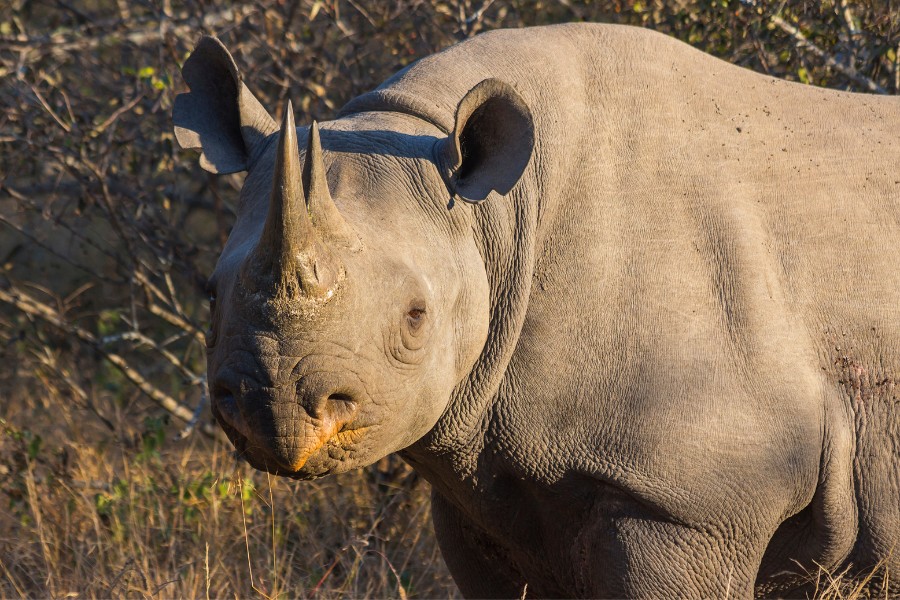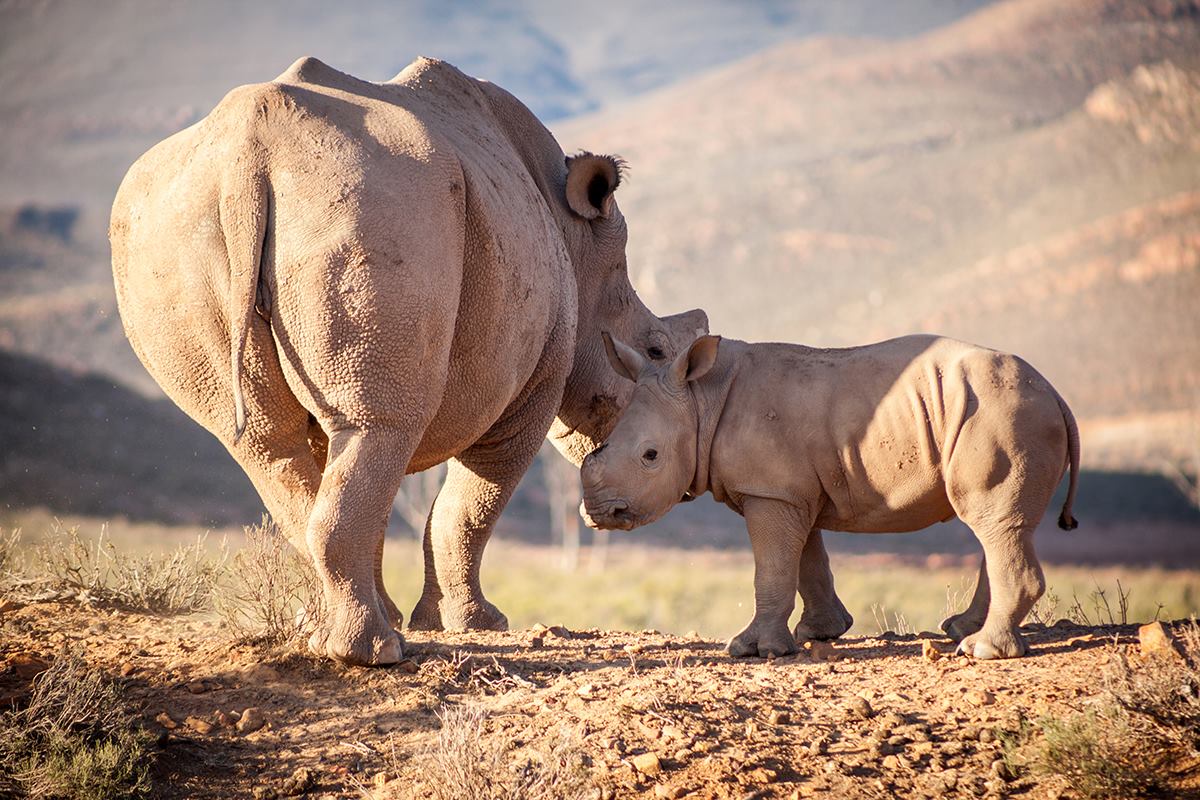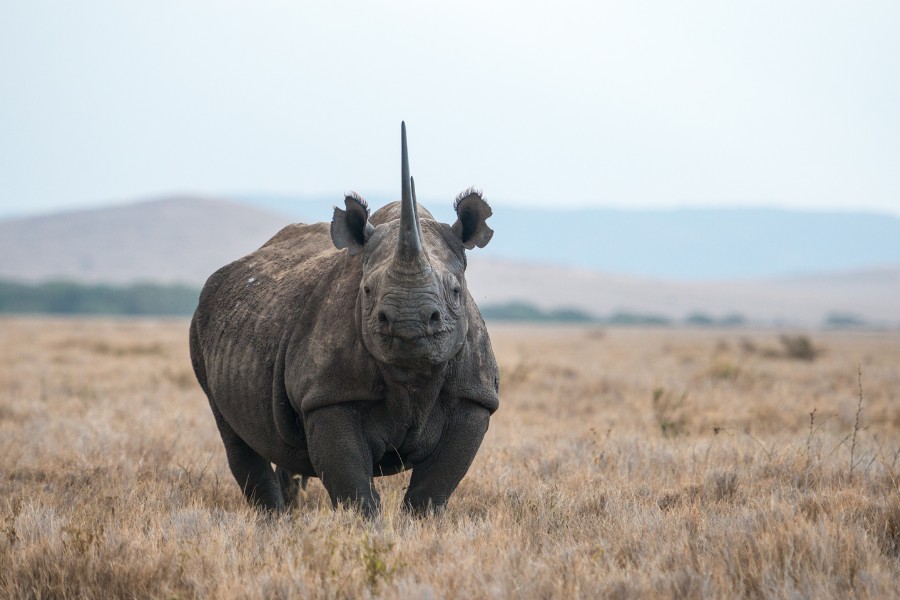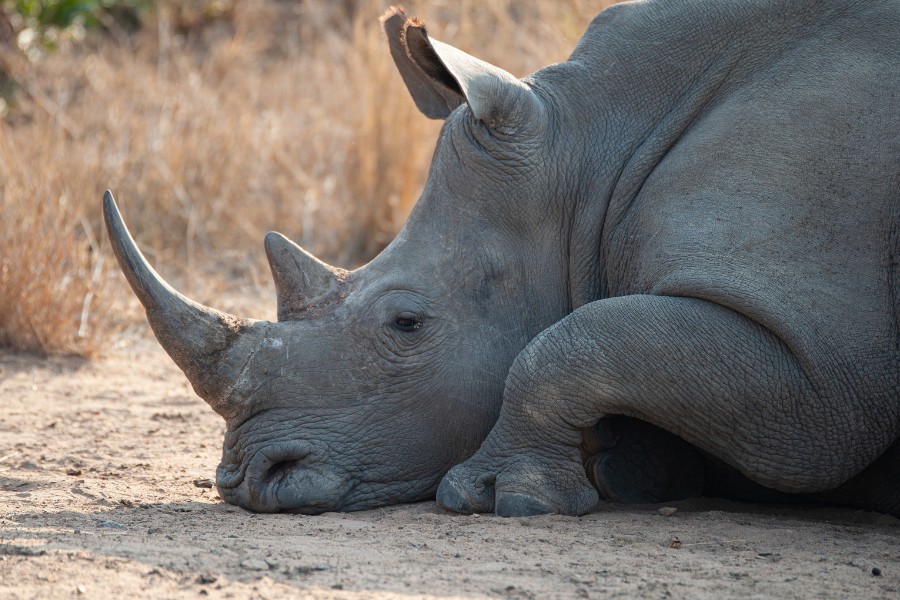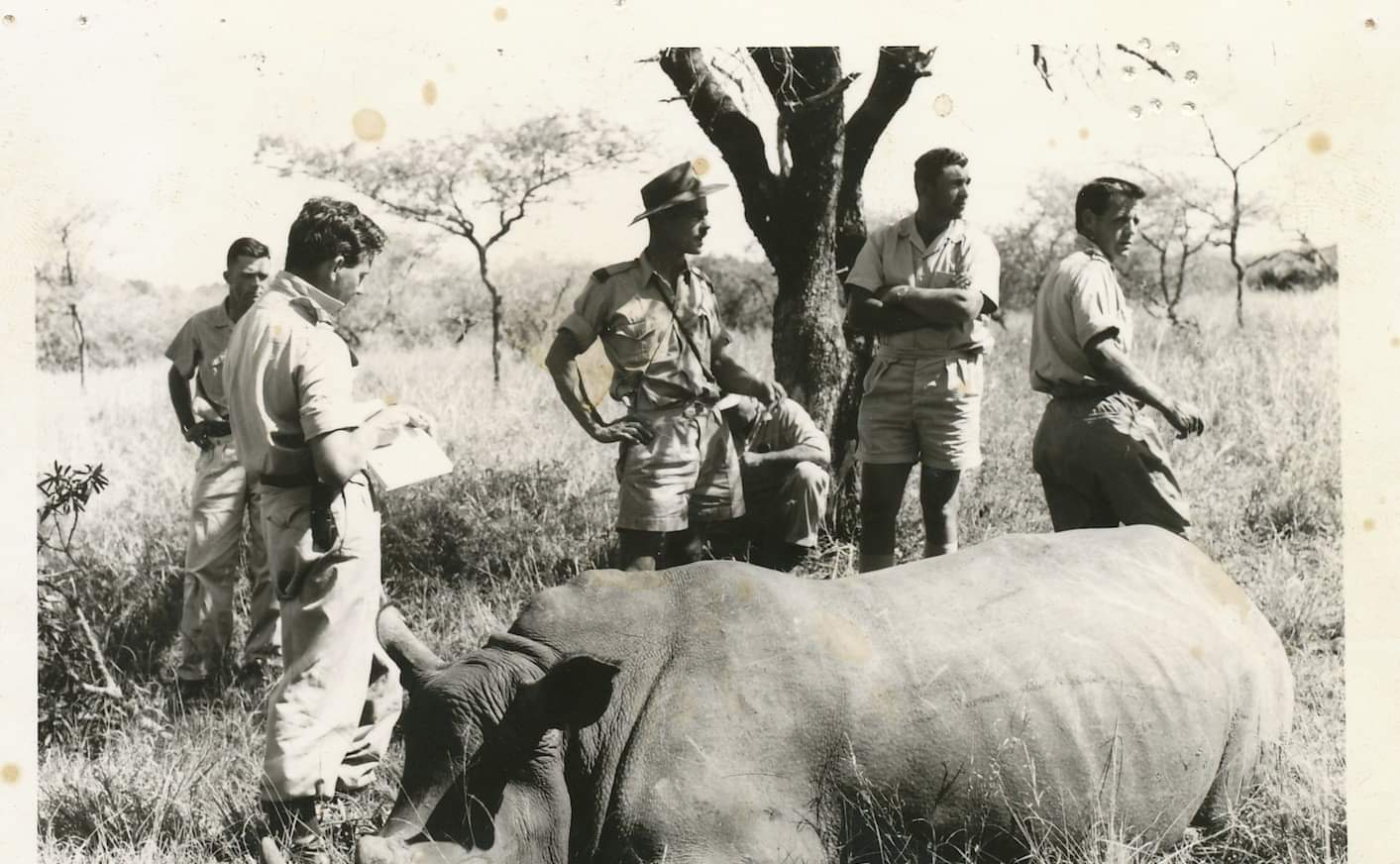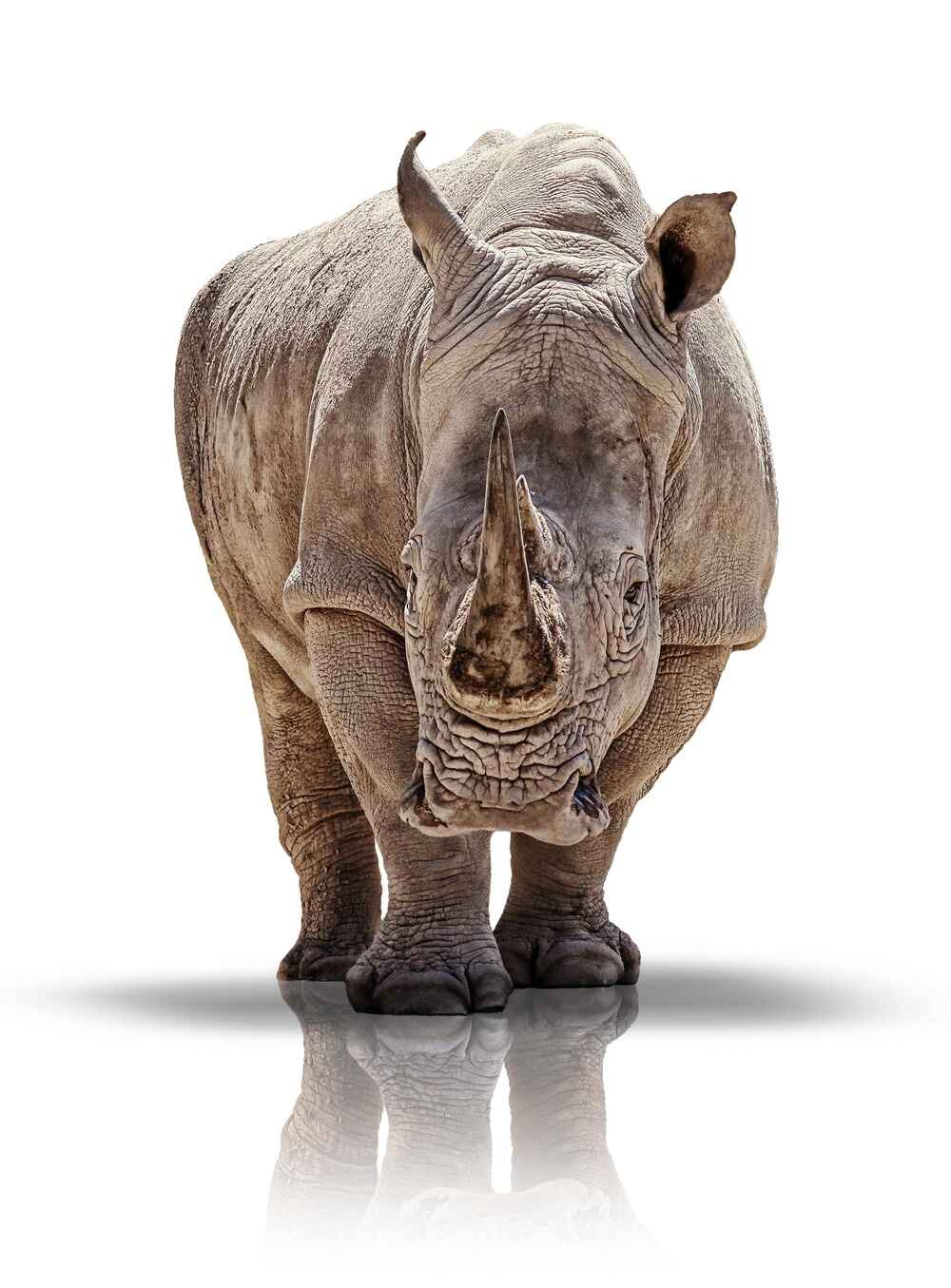South Africa’s fight against rhino poaching takes a worrying turn as KwaZulu-Natal (KZN) emerges as a new battleground. While Kruger National Park, once the epicentre of wildlife poaching across Southern Africa, has witnessed a steady decrease in rhino killings over the last decade, new statistics show that KZN is bearing the brunt of the poachers’ relentless attacks. KZN lost a staggering 143 rhinos to poaching in the first half of 2023, compared to 42 in Kruger National Park. In total, 499 rhinos were poached across South Africa last year, with a shocking 307 of those occurring in Kwa-Zulu Natal reserves.
The Decline of Kruger National Park’s Rhinos
Kruger National Park, the renowned and historic home of South Africa’s Big Five animals, has seen a devastating 59% decline in their rhino population since 2013. Although KNP continues to be home to the world’s largest African rhino population, according to the latest 2022/23 annual report by South Africa National Parks (SANParks), there were only 2,060 rhinos (about 1,851 white rhinos and 210 black rhinos) left in the park at the end of 2022, compared to 2,458 at the end of 2021. This is a decline of 398 animals, or 16.2% of the total population in just one year, despite a much-needed decrease in poaching.
78 rhinos were killed as a result of poaching in Kruger National Park during 2023, compared to 2022, when 124 rhinos were lost to poaching (approximately one rhino killed every three days), and 2021, which lost the park 195 rhinos. At first glance, it appears that this decrease is turning the tide in our favour in the ongoing war against rhino poaching. But, taken in context, Kruger’s rhino population is still declining at a catastrophic rate. To put it in perspective, there were an estimated 7,000 white rhinos and 440 black rhinos in 2007. Despite around 70% of Kruger’s rhino population being dehorned during the 2022/2023 reporting period, the continued decline of their rhino population remains a concern for the future of their species. One could argue that poaching numbers in Kruger National Park are decreasing only because their populations are decreasing—there are simply fewer and fewer animals to target each year.
These alarming statistics, coupled with Kruger’s intensified anti-poaching efforts, have made operating within its borders significantly more challenging for poachers. Sadly, the small success of Kruger National Park comes at a tragic cost. As Kruger becomes a tougher target, poachers have shifted their focus further south, to KZN reserves. Kwa-Zulu Natal’s smaller, more isolated, and less protected parks are now facing the devastating consequences of Kruger’s declining rhino population, with Hluhluwe-iMfolozi National Park becoming the new epicentre of South Africa’s current rhino poaching crisis.
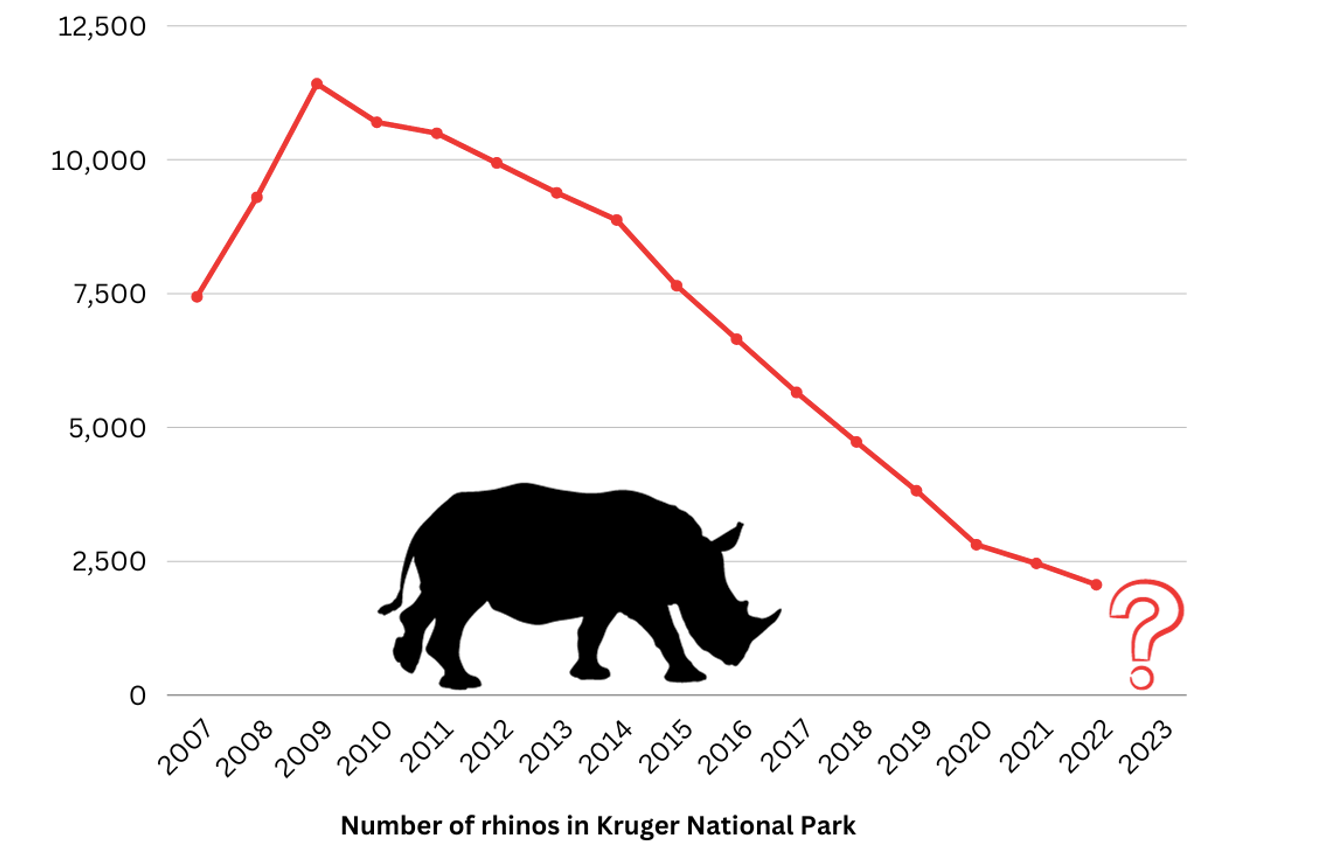
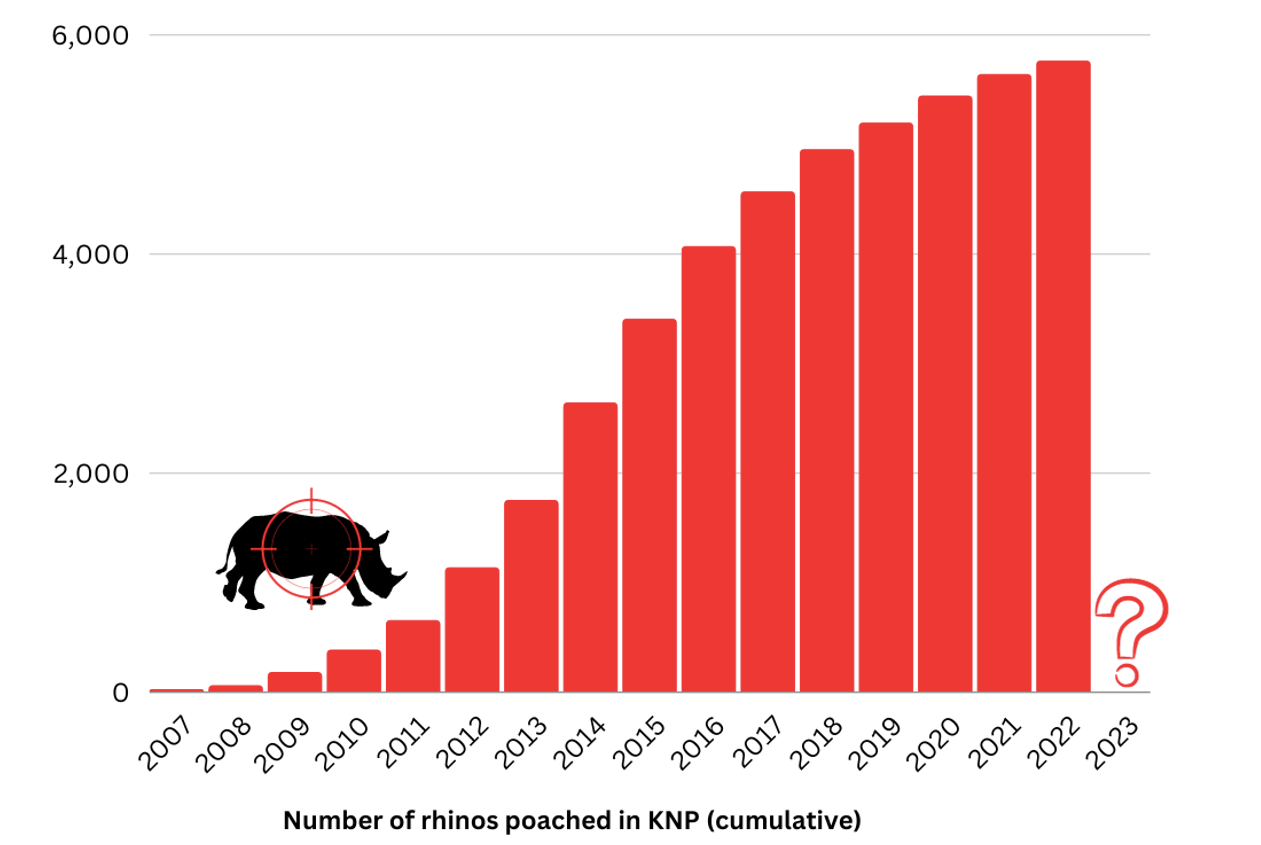
Poaching on the Rise Again
The latest data released by the Department of Forestry, Fisheries and the Environment (DFFE), on the 27 February 2024, paint a grim picture for the future of rhinos in South Africa. In 2023 alone, 499 rhinos were ruthlessly poached in South Africa, with a staggering 62% (307 rhinos) falling victim in KZN reserves. This is an increase of 51 rhinos compared to the 448 rhinos illegally killed across South Africa in 2022. And, while Kruger National Park saw a decrease in poaching compared to previous years, losing 78 rhinos in 2023, the situation remains critical for the survival of rhinos in the wild.
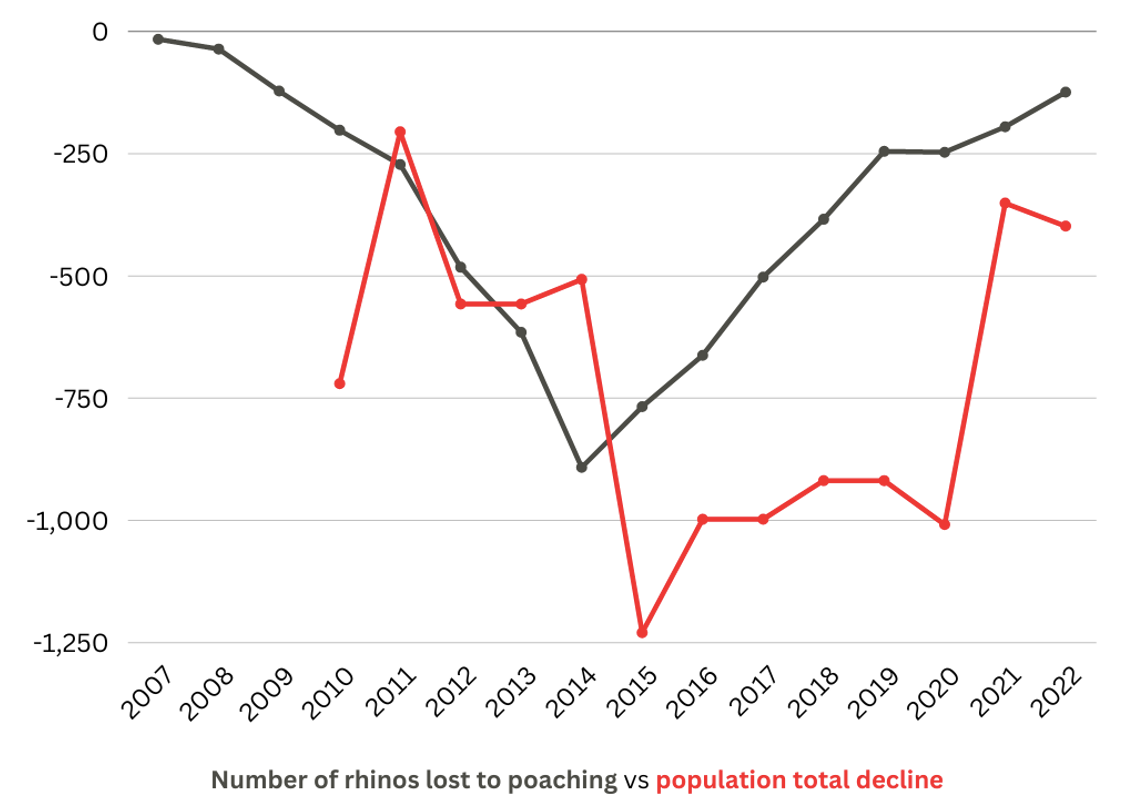
Why has KZN become the New Poaching Target?
1. Intensified Anti-Poaching Initiatives in Kruger
Kruger National Park’s relentless anti-poaching efforts have made operating within its borders considerably more challenging and risky for poachers.
2. A Focus On Smaller Reserves
With Kruger becoming a tougher target, poachers have shifted their focus to reserves within KZN, particularly the Hluhluwe-iMfolozi Park. This historically significant conservation area now faces the brunt of South Africa’s rhino poaching crisis.
What Does this mean for Private Game Reserves?
South African National Parks (SAN Parks) are fighting against poaching with the support and funding of the government. But, even with the help of the national defence force and specialised anti-poaching units, our national parks are struggling to keep their wildlife and rhino populations safe. So, what about the smaller reserves—the private game reserves, game farms, and privately owned conservation areas? Collectively, there are more privately owned rhinos than state owned ones. And, as larger parks continue to lose their rhinos at an alarming rate, it is evident that poachers will begin targeting smaller and more vulnerable rhino herds in private reserves across Southern Africa.

